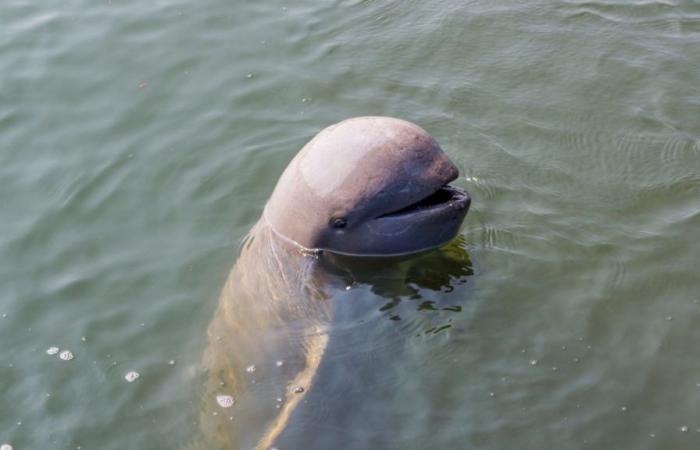The Irrawaddy dolphins, with their distinctive smiles, have become a popular tourist attraction, but their existence is under threat. Widespread in the rivers and along the coasts of South and Southeast Asia, these adorable creatures have suffered the consequences of decades of human activity, making them now an endangered species. But with the right intervention, could their population recover?
The life of the Irrawaddy dolphins
THE Irrawaddy dolphinsnative to countries such as Cambodia, Bangladesh, and Myanmar, are distinguished by their graceful appearance. With a gray upperside and a light underside, these dolphins are not particularly distinctive in color compared to other dolphin species. However, they do sport a rounded head without a distinct beak, often compared to that of newborn beluga whales with dorsal fins.
Their uniqueness also lies in their flexible necks, creating a chonk appearance and folds reminiscent of an infant’s arms. Although they are smaller in length, measuring about 2.8 meters when fully grown, they give off an overall impression of robustness.
These dolphins are adaptive in their quest for food, feeding on the bottom, near fishing boats, and using ingenious ploys to catch their prey. Irrawaddy dolphins are probably among the least visible. They rarely surface, and even when they do, they do not rise much above the water.
Save them from the brink of extinction
Estimating the population of Irrawaddy dolphins is challenging due to their secretive nature. However, for riverine subpopulations where figures are available, the situation is alarming, with estimates varying between 10 and 100 individuals, justifying their classification as an endangered species on the IUCN Red List.
One specific subpopulation is even classified as critically endangered, with just 92 Irrawaddy dolphins estimated across a 190 km stretch of the Mekong, stretching from northern Cambodia to Laos. Although this represents an improvement on previous figures, the species came close to extinction in the late 20th century due to food hunting during periods of war.
Conservation and restoration
In the 21st century, conservation initiatives have been implemented to redress the situation in the Mekong. The Cambodian government, in partnership with organizations such as the World Wildlife Fund, has launched an awareness campaign about the species, introduced laws to counter threats from human activity, and designated the part of the river inhabited by the dolphins as a protected area. Steps have been taken to combat harmful fishing practices, and river guards have been appointed to ensure compliance.
The encouraging results of these conservation initiatives are seen in a slight increase in the Mekong dolphin population, from 80 to 92 in 2019. However, the work is far from finished. Threats continue to loom, requiring continued commitment to the protection of these iconic creatures.
Teak Seng, director of WWF in Cambodia, said in an interview with National Geographic : “Despite the persisting threats to their survival, we must redouble our efforts to protect dolphins, not only for their future, but also for that of the river and the riverside communities.”
Hope persists in the face of potential threats, and according to Mr. Seng, “Their recovery is a sign of hope for the river and the millions of people who depend on it. After years of hard work, we finally have reason to believe that these iconic dolphins can be saved from extinction.” In addition, here are 9 stunning proofs of the extreme intelligence of dolphins.






